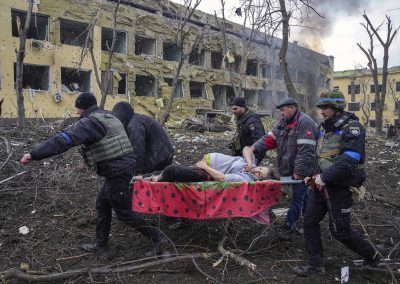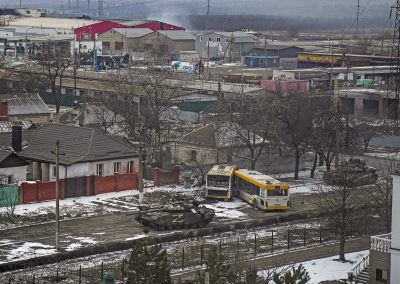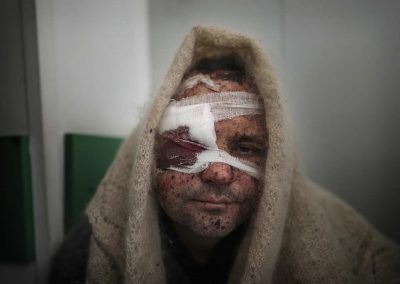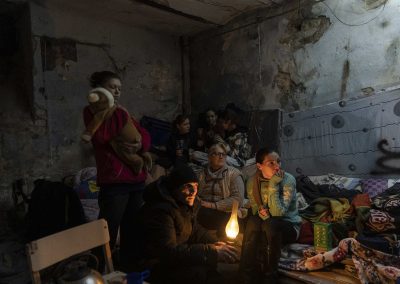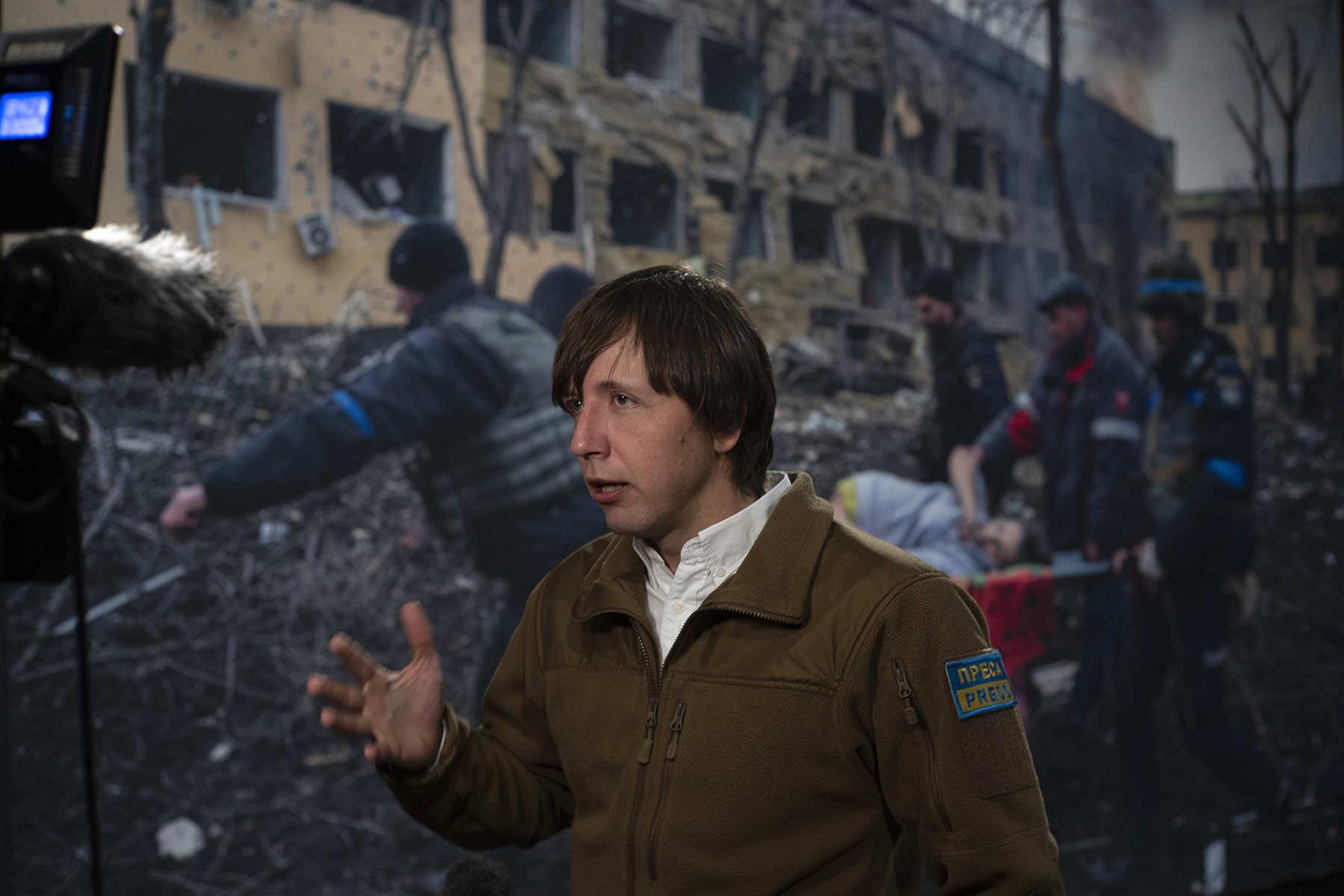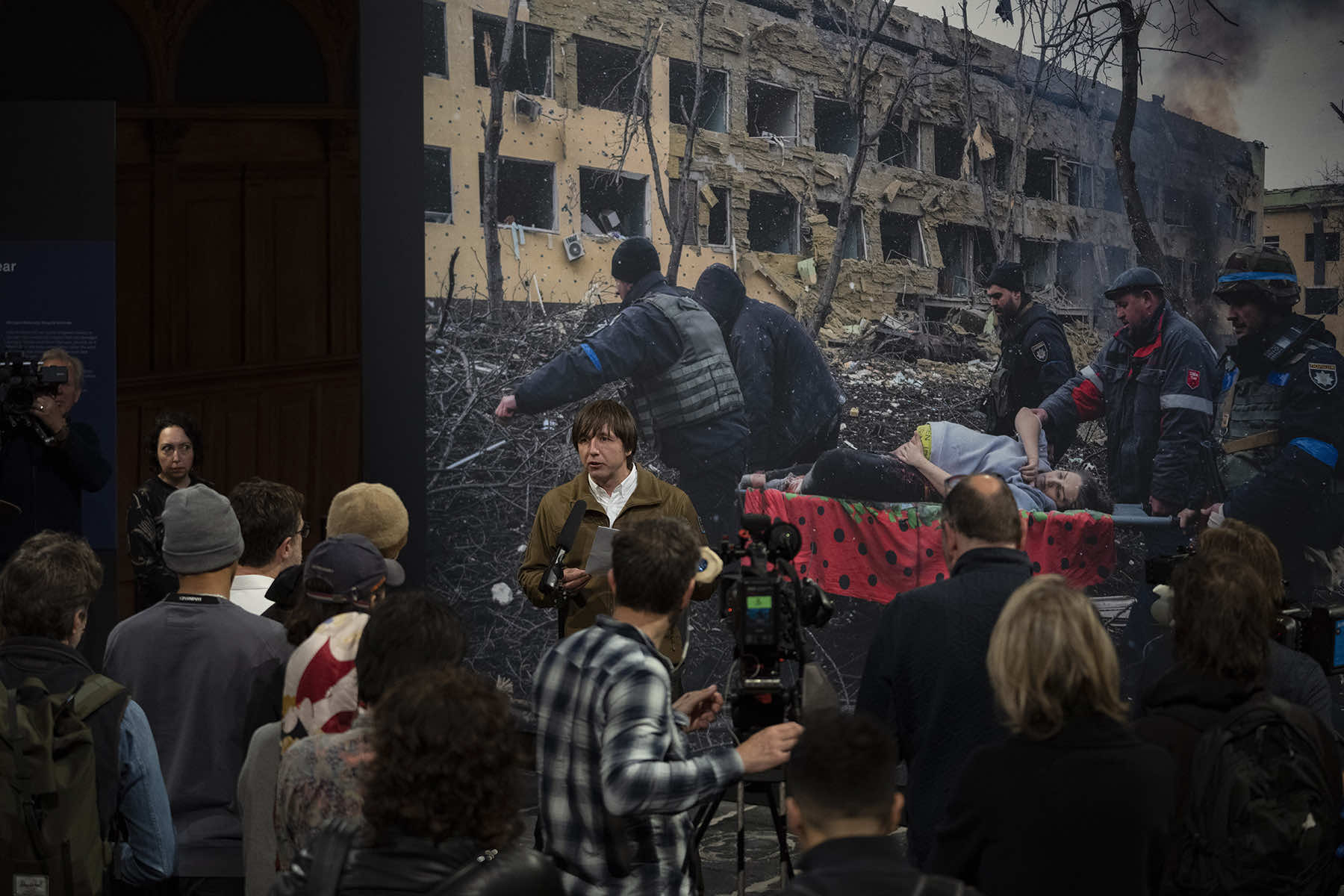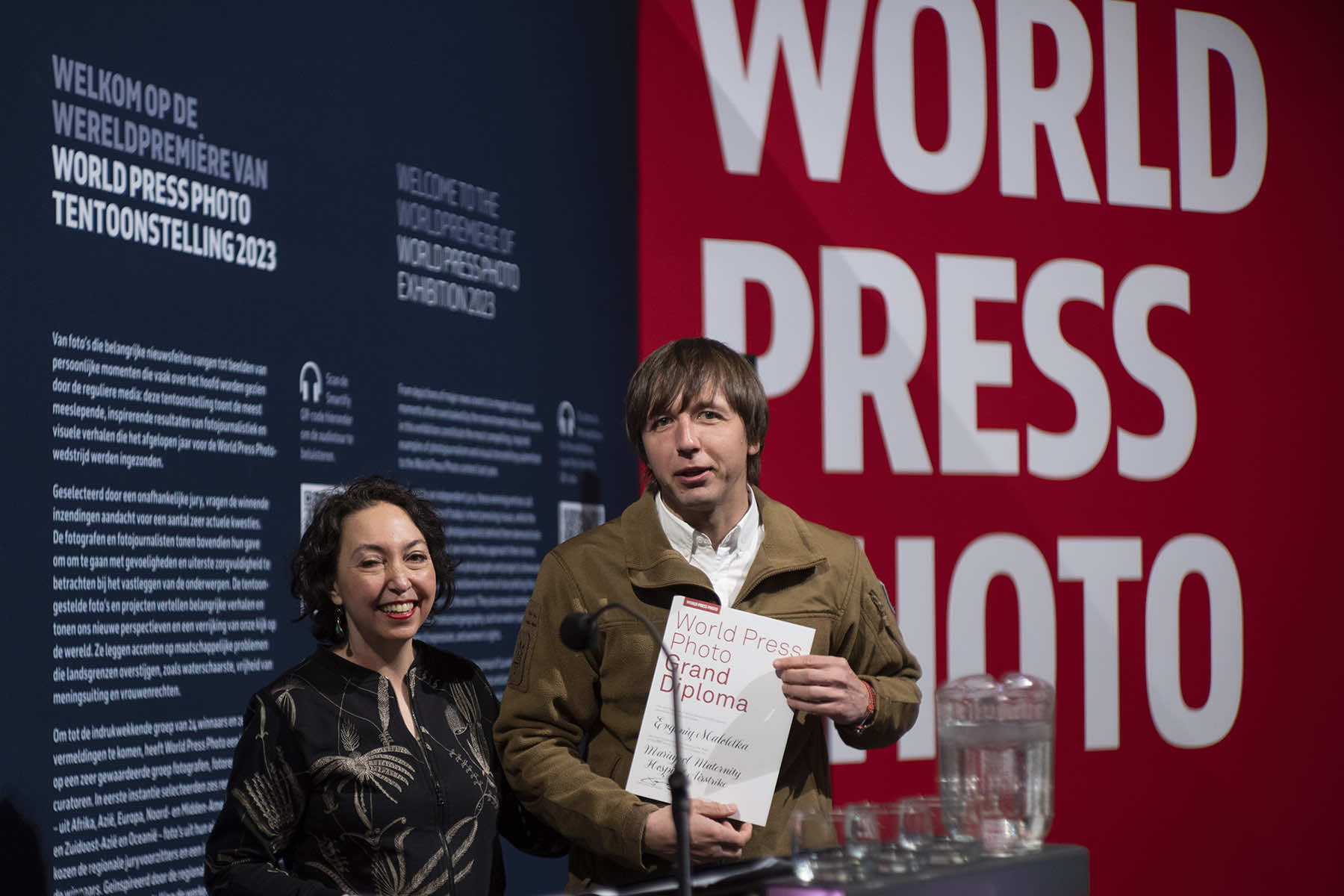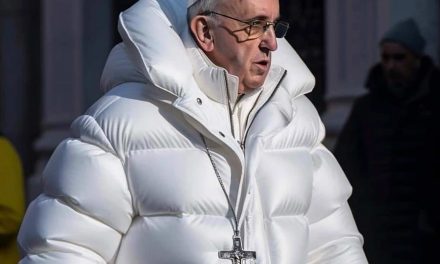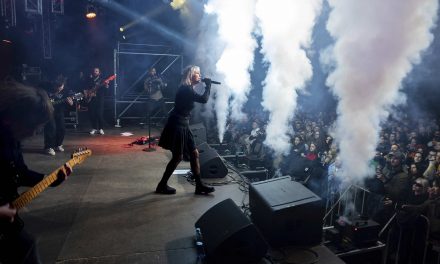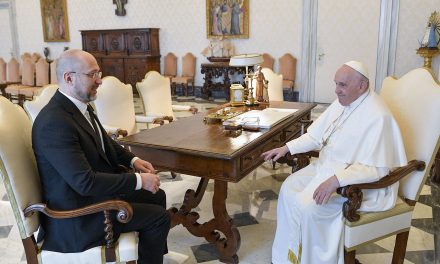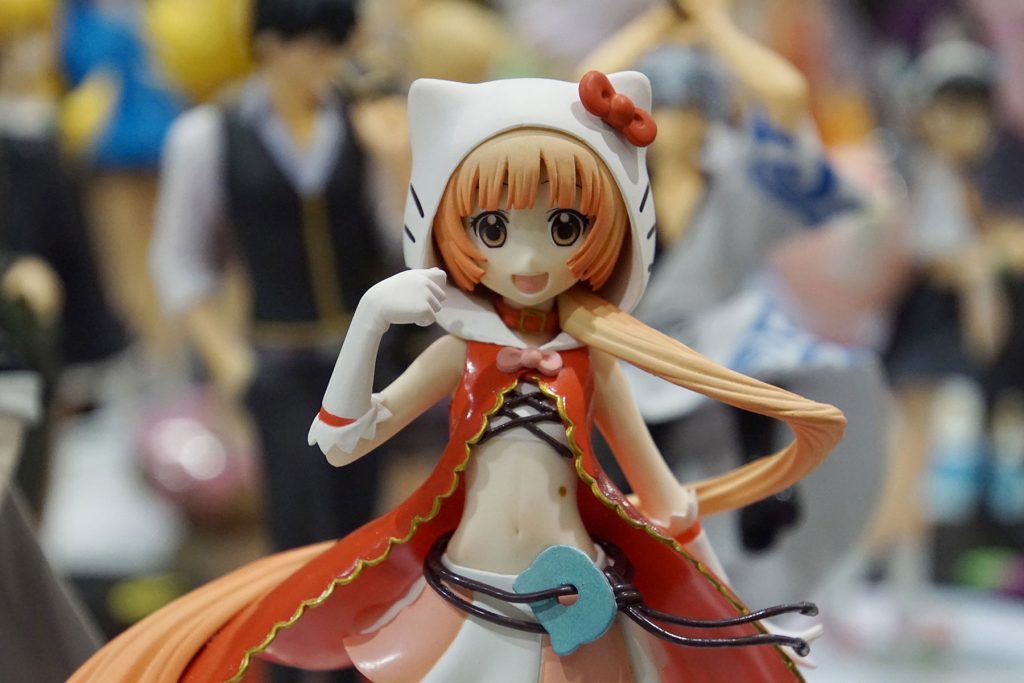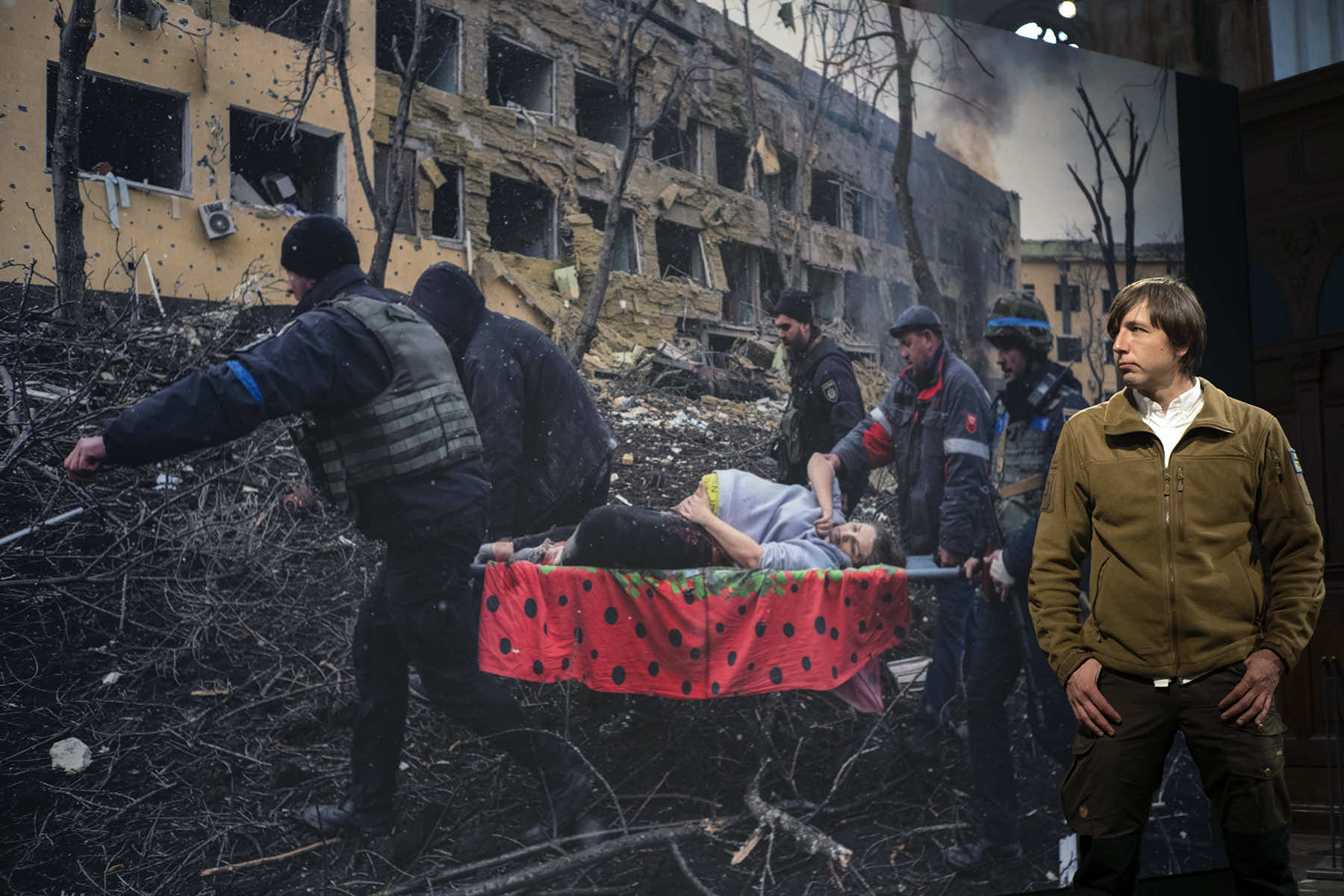
Associated Press photographer Evgeniy Maloletka won the World Press Photo of the Year award on April 20 for his haunting image of emergency workers carrying a pregnant woman through the shattered grounds of a maternity hospital in the Ukrainian city of Mariupol, in the chaotic aftermath of a Russian attack. On May 8, Maloletka and his team won the Pulitzer Prize for public service.
The Ukrainian photographer’s March 9, 2022, image of the fatally wounded woman, her left hand on her bloodied lower left abdomen, drove home the horror of Russia’s brutal onslaught in the eastern port city early in the war.
The 32-year-old woman, Iryna Kalinina, died of her injuries a half-hour after giving birth to the lifeless body of her baby, named Miron.
“For me, it is a moment that all the time I want to forget, but I cannot. The story will always stay with me,” Maloletka said in an interview before the announcement.
“Evgeniy Maloletka captured one of the most defining images of the Russia-Ukraine war amid incredibly challenging circumstances. Without his unflinching courage, little would be known of one of Russia’s most brutal attacks. We are enormously proud of him,” AP Senior Vice President and Executive Editor Julie Pace said.
AP Director of Photography J. David Ake added: “It’s not often that a single image becomes seared into the world’s collective memory. Evgeniy Maloletka lived up to the highest standards of photojournalism by capturing the ‘decisive moment,’ while upholding the tradition of AP journalists worldwide to shine a light on what would have otherwise remained unseen.”
Maloletka, AP video journalist Mystyslav Chernov, and AP producer Vasilisa Stepanenko, who are also Ukrainian, arrived in Mariupol just as Russia’s full-scale invasion, which began on February 24, 2022, sparked Europe’s biggest conflict since World War II.
They stayed for nearly three weeks, chronicling the Russian military pounding the city and hitting hospitals and other civilian infrastructure. An AP investigation found that as many as 600 people may have been killed when a Mariupol theater being used as a bomb shelter was hit on March 16 last year.
The three were the only international journalists left in the city when they finally managed a risky escape.
World Press Photo Foundation Executive Director Joumana El Zein Khoury told the AP that jury members decided quickly Maloletka’s image should win the prestigious prize.
She said it was “apparent from the beginning that it needed to win. All the jury members said it really from the beginning of the judging. And why? Because it really shows how war and especially in this case, the Ukrainian war, affects not only one generation, but multiple generations.”
Maloletka said the team believed it was important to remain in Mariupol, despite the danger, “to collect the people’s voices and collect their emotions and to show them all around the world.”
A series of photos by Maloletka from besieged Mariupol won the European regional World Press Photo Stories award that was announced in March. Maloletka’s images from Mariupol also have been honored with awards including the Knight International Journalism Award, the Visa d’or News Award and the Prix Bayeux Calvados-Normandie.
“I think it is really important that specifically a Ukrainian won the contest showing the atrocities against civilians by Russian forces in Ukraine,” he said. “It is important that all the pictures we were doing in Mariupol became evidence of a war crime against Ukrainians.”
In the three other global categories announced on April 20, two-time World Press Photo winner Mads Nissen of Denmark won Photo Story of the Year for his series for Politiken and Panos Pictures, titled “The Price of Peace in Afghanistan,” about daily life in Afghanistan in 2022.
Anush Babajanyan of Armenia won the Long-Term Project award for “Battered Waters” for VII Photo and National Geographic Society, and Egyptian photographer Mohamed Mahdy won the Open Format award for “Here, The Doors Don’t Know Me.”
“The four global winners represent the best photos and stories from the most important and urgent topics of 2022,” Brent Lewis, global jury chair, and New York Times photo editor said in a statement. “They also help to continue the tradition of what it is possible to do with photography, and how photography helps us to see the universality of the human condition.”
The four global winners were selected from more than 60,000 entries submitted by 3,752 entrants from 127 countries.
Regional winners announced earlier included Maya Levin for her image for AP of Israeli police beating mourners carrying the coffin of Al Jazeera journalist Shireen Abu Akleh, who was fatally shot while covering an Israeli military raid in the West Bank. Following international pressure, Israeli defense forces admitted it was likely that one of their soldiers shot the prominent correspondent. The IDF denied that the shooting was intentional and declared the case closed.
Pulitzer Prize-winning AP photographer Emilio Morenatti, who lost a leg while reporting in Afghanistan, was awarded an honorable mention for a series of images of people in Ukraine who have undergone amputations as a result of the Russian invasion.
Morenatti and Maloletka were also part of AP’s team that won the Pulitzer Prize on May 8 for breaking news photography in Ukraine that included Bernat Armangue, Felipe Dana, Nariman El-Mofty, Rodrigo Abd, and Vadim Ghirda.
The Pulitzers honor the best in journalism from 2022 in 15 categories, as well as eight arts categories focuses on books, music, and theater.

